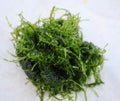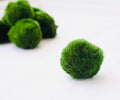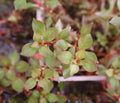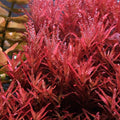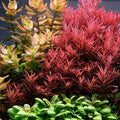How Much Lighting and Nutrients Do My Aquarium Plants Need?
There is a lot of discussion on the unique substrate, consideration of nutrients, and water requirements required to cultivate healthy aquatic plants. The truth is that with basic lighting and the right selection of easily grown plants, any aquarium can have fantastic live plants without much difficulty.
How Many Hours of Sunlight Do Plants in Aquariums Require?
Every aquarium plant needs a consistent day/night cycle as well as 10 to 12 hours of sunshine every day. The physiological activity of the plant may be sustained with this, which is sufficient for both the environment and the plant itself.
Requirements for Good Lighting
All aquarium plants require light to perform the photosynthesis necessary for their development and well-being. The plants may take up the carbon dioxide emissions the fish exhale when there is adequate illumination. Algae, a form of microscopic life, will emerge when there is too much light.
When the amount of light is just right, some little spots of green algae may be seen on the surface of rocks and the walls of a glass aquarium. If there is too much light, a sort of floating algae can bloom, which will turn the water green. If there is too little light, plants suffer. A healthy community aquarium has some desirable algae because fish eat it and it adds to the natural appearance of the tank.
An aquarium may only require 5 hours of artificial light each day if it is close to a window that gets enough sunlight. Although there won't be any artificial light present, the algae growth will still be out of control under direct sunlight. An aquarium should always be out of direct sunlight for maximum effects.
If it makes for better viewing in the evening for the enthusiast, artificial lighting should be on for at least 8 hours every day, but it can be on for up to 12 hours.
Macro Nutrients
Nitrogen (N), phosphorus (P), and potassium are the three macronutrients that are mostly required for proper development (K). It is crucial to pick a plant meal that has these components since they are needed in considerably higher concentrations than other nutrients. It is critical to include these elements in addition if:
- You have an aquarium with lots of plants.
- You have a medium to high light level and are injecting CO2.
- You are raising plants in the hard and medium categories.
To prevent starving your plants, you must add NPK if your aquarium is heavily planted. Providing CO2 to your plants at this stage will also be extremely helpful. You may read more about CO2 in our website's section on plant care.
Micro Nutrients
In every planted aquarium, micronutrients should be given in modest amounts. Iron (Fe), Magnesium (Mn), Chlorine (Cl), Copper (Cu), Boron (B), Molybdenum (Mo), Cobalt (Co), and Nickel (Ni) are the most important micronutrients.
Your plants will begin to display symptoms of nutrient deficiency, such as holey leaves, yellowing foliage, etc., without these.
.
What Happens When There is a Lack of Nutrients?
The first thing that typically occurs when plants don't get the nutrients they need is that their growth slows. Energy will be directed toward root development in rooted organisms to find nutrients in the substrate layer.
Then, depending on the type of nutrient that is deficient, a variety of symptoms may manifest. For instance, in certain circumstances, leaves may grow darker or new shoots may become white.
The leaves may be smaller than usual, and the stems seem thin. Plants can scavenge minerals from their old leaves and channel them to new growth when mobile nutrients like NPK and Mg run too low. Older leaves begin to yellow or shed prematurely as a result of this.
The primary cause of algae is weak, sickly vegetation. As a result, it's essential to feed plants regularly to maintain their health and prevent algae growth.
How Can I Tell When Anything is Missing?
The most likely reason for your plants' failure to thrive, withering, and leaf loss is inadequate illumination. If that's not the case, there are a variety of other possibilities, such as poor water quality, illnesses, or your fish devouring them. You would have to do further research.
Your plants are likely lacking a vital nutrient in the aquarium if they are growing but something doesn't look right, like that they are off-color or aren't fully developing. Look into the signs of certain nutrient deficiency in the plant to see if you can locate a source for them in your system.
Taking care of your aquarium plants is not that as complicated as anyone may think. However, with proper guidance and tender care will make a great propagation of these plants and then will lead to a healthy water tank.



